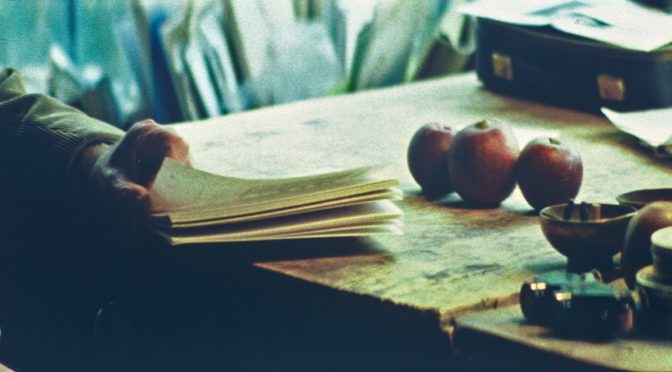This is the preliminary programme. Updates and minor changes will follow.

- This event has passed.
Session 13 – Continuous Present 3
December 14, 2019 – 10:00 am – 11:30 am
Catherine Anabel
In the Labyrinth: Sebald’s (Post-war) French Connections
The generation that came to adulthood during or immediately after the Second World War faced the challenge of making art in the post-Auschwitz world, of confronting a world in not only people but ideas, conventions, beliefs were displaced.
In France this resulted in the phenomena of the nouveau roman, and the nouvelle vague in film, both of which rejected conventional narrative linearity and challenged ideas of authorship, as well as in music that embraced dissonance. W G Sebald was from the next generation, born at the very end of the war and thus without the direct experiences that had shaped those artists, but confronting as an adolescent and a young man the way in which the status quo had reasserted itself, the ‘denazification’ process had stalled, and the Cold War had changed priorities and stifled the kind of challenging debate that had briefly seemed possible before.
Sebald’s interest in the French innovators in film and literature is evident in his work. I will consider the influence of Alain Resnais, in particular of his film L’Année dernière à Marienbad (screenplay by Alain Robbe-Grillet, the theorist of the nouveau roman), but will concentrate on writer Michel Butor, whose novel L’Emploi du temps was particularly influential on Sebald. I will draw upon Sebald’s poetry, on his ‘Manchester’ works including The Emigrants, and on Austerlitz, to show how Sebald responded to their strategies and how they influenced his own response to the post-war world.
Catherine Annabel is a part-time PhD student in the Department of French at the University of Sheffield. She is now retired, after many years in higher education administration, at both Sheffield’s Universities. Her research focuses on a new reading of Michel Butor’s 1956 novel, L’Emploi du temps, a book with which she has been preoccupied for many years, exploring how this work influenced W G Sebald, and the ways in which, in turn, Sebald’s work sheds light on Butor. Catherine’s blog, Passing Time (https://cathannabel.blog/), covers a wide range of topics, from Sebald and Butor to the Marvel Cinematic Universe and Brexit.
Silke Helmerdig
Fragmented Memories of Past Futures
Photography is often related to memory, despite the obvious difference that a photograph appears as a fixed image whilst memory is a capacity to recall moments from the past in an always changing manner. Photographs are usually understood as describing a moment from the past, which they once recorded. But we do not actually see that moment when we regard the photograph. Instead, through its iterative reappearance, the image works in its belatedness in a way that is even more analogous to memory than is usually assumed. Once a photograph is regarded just as an image — not as a just image — memory becomes detached from the collected traces. The description of the recorded past that the photograph embodies turns into a narration of possible futures.
As a photographer I propose an understanding of photographs not as pictures of what has previously existed in the simple past, but rather as images that speak in the tense of the future anterior. Substantiated by visuals, I suggest a utopian reading of photographic memories. Derrida’s notions of trace and iteration will be conjoined with Bloch’s principle of hope as a conceptual scheme through which I understand photographs not as images of the past but as variable memories that propose future possibilities.
Silke Helmerdig (PhD) is Professor of Art Photography at Pforzheim University. As an artist and researcher her interest in theory and practice is in photography and time. She is co-author of Ein Pixel, Zwei Korn — Grundlagen analoger und digitaler Fotografien und ihrer Gestaltung (Anabas, 2006) and author of Fragments, Futures, Absence and the Past (Transcript, 2016). She also published two artist books, Pavement Drawings (ex pose, 2012) and Berlin by Numbers/London from A-Z (Peperoni Books, 2018). Her art is widely exhibited around Europe.
Peter Muir
Robert Smithson: the Landscape Reels Back
In his artistic practice Robert Smithson brings together an economy of different overlapping forms; creating a correspondence between poetry, media, memory, myth and fact. This braiding together as the un-differentiated equivalence of materials and ideas, suggests the allegorisation of a certain sublime and visionary apprehension of art’s place and operation within a group of entropic activities, configured as a certain rising-up-into-ruin. This central artistic trope, which evokes, paradoxically, a sense of luminosity and lyricism (a materialist form of ‘ecstasy or dread’) in his work, is configured in relation to the principle that interpretation, and therefore meaning, might be extracted by a living dialectic between the beholder, the environment and its exploration and the passing of time that marks and defines them both (Henri Lefebvre and Michel De Certeau). In order to pursue the significance of these ideas and their consequences, for example, regarding the materialisation of memory, the urbanization of the picturesque and the re-emergence of the face of nature in his work (W.G. Sebald, James E. Young, Pierre Nora and Benjamin’s ‘redemption’), this paper directs particular attention to the ‘ruin’ of Robert Smithson’s Partly Buried Woodshed (Kent State University, Ohio, 1970), as well as the text ‘A Sedimentation of the mind: Earth Projects’ (1968), an essay in which he begins to develop the range and syntax of his artistic intentionality.
Dr. Peter Muir is an Honorary Associate in Contemporary Art History with the Open University. Academic interests include the relationship between word and image, the mnemonic significance of materials as well as the implications of spatial theory in relation to contemporary art practice.
